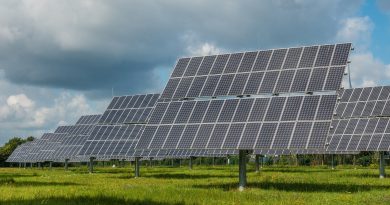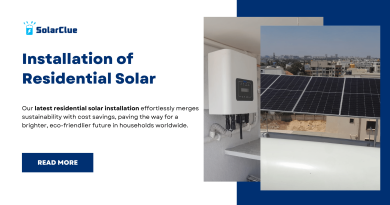Do Solar Panels Use Thermal Energy?
Solar energy is a versatile and powerful resource that can be harnessed in different ways to meet our energy needs. The two primary methods are photovoltaic (PV) solar panels, which convert sunlight into electricity, and solar thermal systems, which capture and use sunlight as heat. This blog post will explore the relationship between these two technologies, comparing their functions, advantages, and potential for a sustainable energy future.
Table of Contents
- 1 The Science Behind Solar Panels and Their Primary Function
- 2 Understanding Solar Thermal Energy and Its Applications
- 3 Comparing Photovoltaic (PV) and Solar Thermal Systems
- 4 The Efficiency of PV vs. Solar Thermal for Different Needs
- 5 The Environmental Impact of PV and Solar Thermal Technologies
- 6 The Future of Solar Energy and the Potential for Combined PV and Thermal Systems
- 7 Common Misconceptions About Solar Panels and Thermal Energy
- 8 The Role of Solar Panels and Thermal Energy in a Sustainable Energy Future
- 9 Case Studies of Successful Solar Panel and Thermal Energy Installations
- 10 Table: Comparison of Photovoltaic (PV) and Solar Thermal Technologies
- 11 Conclusion
- 12 FAQ Section
The Science Behind Solar Panels and Their Primary Function
Photovoltaic (PV) Technology:
- How PV Solar Panels Work: Solar panels, or photovoltaic cells, are designed to convert sunlight directly into electricity. They do this through the photovoltaic effect, where photons from sunlight knock electrons loose from atoms within a semiconductor material (typically silicon), generating an electric current.
- Primary Function: The main function of solar panels is to produce electricity. This electricity can be used to power homes, businesses, and devices, or be stored in batteries for later use.
Understanding Solar Thermal Energy and Its Applications
Solar Thermal Technology:
- How Solar Thermal Works: Solar thermal systems capture sunlight and convert it into heat. This heat can be used directly for heating water, space heating, or even generating electricity in concentrated solar power (CSP) plants.
- Applications:
- Residential Water Heating: Solar thermal systems are commonly used for heating water in homes, reducing the need for conventional water heaters.
- Space Heating: Solar thermal energy can be used for space heating in buildings, particularly in regions with cold climates.
- Concentrated Solar Power (CSP): CSP plants use mirrors or lenses to focus sunlight on a small area to produce intense heat, which drives turbines to generate electricity.
Comparing Photovoltaic (PV) and Solar Thermal Systems
| Aspect | Photovoltaic (PV) Solar Panels | Solar Thermal Energy Systems |
|---|---|---|
| Primary Function | Converts sunlight into electricity | Converts sunlight into heat |
| Efficiency | Typically 15-22% efficiency in converting sunlight to electricity | High efficiency in capturing and using heat (up to 70-90%) |
| Applications | Powering homes, businesses, devices, and batteries | Heating water, space heating, CSP electricity generation |
| Installation | Generally requires less space and can be installed on rooftops or open ground | May require more space, particularly for CSP plants |
| Cost | Moderate to high upfront cost, with declining prices due to technology improvements | Lower to moderate cost for residential systems; higher for large-scale CSP |
| Environmental Impact | Minimal during operation, with some impact during manufacturing | Low environmental impact, but large-scale CSP can affect local ecosystems |
| Maintenance | Low maintenance, mainly cleaning and occasional checks | Moderate maintenance, particularly for large CSP systems |
The Efficiency of PV vs. Solar Thermal for Different Needs
Photovoltaic Efficiency:
- Electricity Generation: PV solar panels are most efficient at generating electricity directly from sunlight. Their efficiency ranges from 15% to 22%, depending on the technology and quality of the panels.
- Versatility: PV systems can be used in a wide range of environments and applications, making them ideal for both urban and rural settings.
Solar Thermal Efficiency:
- Heat Production: Solar thermal systems are highly efficient in capturing and using heat, with efficiencies ranging from 70% to 90%. This makes them ideal for applications that require direct heating, such as water or space heating.
- Large-Scale Applications: CSP plants are particularly efficient for large-scale electricity generation in sunny regions, though they require significant space and investment.
The Environmental Impact of PV and Solar Thermal Technologies
Photovoltaic Solar Panels:
- Manufacturing Impact: The production of PV panels involves the use of raw materials like silicon and rare earth metals, which can have environmental impacts during extraction and manufacturing. However, the environmental impact during operation is minimal.
- End-of-Life Disposal: As solar panels reach the end of their lifespan (25-30 years), disposal and recycling are important considerations. Efforts are being made to develop recycling programs to recover valuable materials from old panels.
Solar Thermal Systems:
- Low Operational Impact: Solar thermal systems have a low environmental impact during operation, particularly for residential applications like water heating.
- CSP Plant Considerations: Large-scale CSP plants can have a more significant environmental impact, particularly if they disrupt local ecosystems or require large land areas.
The Future of Solar Energy and the Potential for Combined PV and Thermal Systems
Hybrid Systems:
- PV-Thermal (PVT) Systems: These systems combine photovoltaic and thermal technologies, capturing both electricity and heat from the same solar panels. This dual-functionality increases overall efficiency and is particularly useful in environments where both electricity and heat are needed.
- Innovation and Research: Ongoing research is focused on improving the efficiency and affordability of both PV and thermal systems, as well as developing hybrid systems that maximize solar energy utilization.
Scalability and Adoption:
- Widespread Use: As solar technology continues to improve and costs decline, the adoption of both PV and thermal systems is expected to increase, contributing to a more sustainable energy future.
- Integration with Other Technologies: Combining solar energy with other renewable sources, like wind or geothermal, can create more resilient and efficient energy systems.
Common Misconceptions About Solar Panels and Thermal Energy
Misconception 1: Solar Panels Provide Heat:
- Clarification: Photovoltaic solar panels are designed to convert sunlight into electricity, not heat. However, solar thermal systems are specifically designed to capture and use heat.
Misconception 2: Solar Panels Can Replace All Heating Systems:
- Clarification: While solar panels can generate electricity to power electric heating systems, they are not as efficient at direct heat production as solar thermal systems.
Misconception 3: Solar Thermal Systems Are Outdated:
- Clarification: Solar thermal technology is still very relevant and efficient, especially for heating applications. It continues to be an important component of the renewable energy mix.
The Role of Solar Panels and Thermal Energy in a Sustainable Energy Future
Sustainability:
- Complementary Technologies: PV and solar thermal technologies complement each other, providing both electricity and heat from the sun. Together, they can significantly reduce reliance on fossil fuels and lower greenhouse gas emissions.
- Decentralized Energy: Solar energy systems can be deployed in both urban and rural areas, supporting decentralized energy production and reducing the strain on centralized power grids.
Policy and Incentives:
- Government Support: Continued government incentives and policies that support both PV and solar thermal installations are essential to drive further adoption and innovation.
- Public Awareness: Increasing public awareness of the benefits and applications of both technologies will help accelerate their adoption.
Case Studies of Successful Solar Panel and Thermal Energy Installations
Case Study 1: Residential Solar Thermal System in Germany:
- Location: Munich, Germany
- Setup: A solar thermal system for water heating, combined with a small PV system for electricity generation.
- Outcome: Reduced energy bills by 50% and provided 70% of the household’s hot water needs.
Case Study 2: PV-Thermal Hybrid System in Spain:
- Location: Seville, Spain
- Setup: A combined PV-Thermal system installed on a commercial building, providing both electricity and hot water.
- Outcome: Increased overall energy efficiency by 25%, with significant savings on both electricity and heating costs.
Table: Comparison of Photovoltaic (PV) and Solar Thermal Technologies
| Aspect | Photovoltaic (PV) Solar Panels | Solar Thermal Energy Systems |
|---|---|---|
| Primary Function | Electricity generation | Heat generation |
| Typical Efficiency | 15-22% | 70-90% |
| Best Applications | Powering homes, businesses, devices | Water heating, space heating, CSP plants |
| Space Requirements | Moderate, can be rooftop mounted | Varies, more space needed for CSP |
| Environmental Impact | Low during operation, some during manufacturing | Low during operation, potential impact for large CSP |
| Installation Cost | Moderate to high | Lower for residential, higher for CSP |
| Maintenance Requirements | Low | Moderate, especially for CSP |
| Lifespan | 25-30 years | 20-25 years for residential systems |
| Scalability | Highly scalable | Scalable, but more challenging for large systems |
Conclusion
Both photovoltaic and solar thermal technologies offer unique advantages and can play a crucial role in a sustainable energy future. While PV panels are ideal for generating electricity, solar thermal systems excel in capturing and using heat. By understanding the strengths and applications of each technology, homeowners, businesses, and policymakers can make informed decisions that best meet their energy needs and environmental goals. As technology continues to advance, the potential for combining PV and thermal systems offers exciting possibilities for maximizing solar energy utilization.
FAQ Section
1. What is the main difference between photovoltaic and solar thermal systems?
Photovoltaic (PV) systems convert sunlight into electricity, while solar thermal systems capture sunlight as heat for water heating, space heating, or electricity generation in CSP plants.
2. Which is more efficient: PV or solar thermal?
Solar thermal systems are generally more efficient at capturing and using heat (70-90%) compared to PV systems’ efficiency in converting sunlight to electricity (15-22%).
3. Can I use solar panels to heat my home?
While PV panels generate electricity that can power electric heaters, solar thermal systems are specifically designed for heating and are more efficient for this purpose.
4. Are solar thermal systems outdated?
No, solar thermal systems are still widely used and are particularly effective for residential water heating and large-scale CSP applications.
5. What are hybrid PV-Thermal systems?
Hybrid PV-Thermal (PVT) systems combine both photovoltaic and thermal technologies, capturing both electricity and heat from the same system to maximize energy efficiency.



